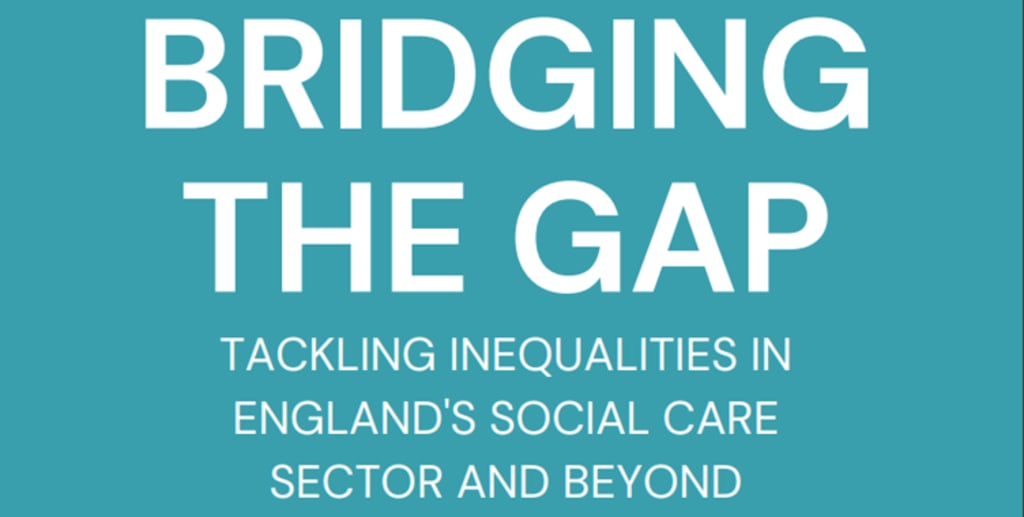Closing the Divide & Addressing Education Inequality in the UK
Understanding the Scope of Socioeconomic Disparities in UK

Education is often hailed as the great equalizer, a pathway to success regardless of background. However, in the United Kingdom, socioeconomic disparities continue to plague the education system, hindering the realization of equal opportunities for all students. In this article, we delve into the root causes of these inequalities and explore strategies to bridge the gap in UK education.
The Root Causes of Socioeconomic Inequalities
Economic background as a determinant of educational opportunities
In the UK, a student's economic background often determines the quality of education they receive. Children from affluent families have access to better-funded schools, resources, and extracurricular activities, while those from low-income households may struggle to access the same opportunities.
Impact of social status and parental education on academic success
Social status and parental education also play significant roles in shaping a student's educational outcomes. Children of highly educated parents are more likely to excel academically, benefiting from a supportive home environment and access to educational resources.
Access to Quality Education
Disparities in access to quality schools and resources based on socioeconomic status
Socioeconomic disparities manifest in unequal access to quality schools and educational resources. Schools in affluent areas often have better facilities, experienced teachers, and a wider range of extracurricular activities, creating an uneven playing field for students from disadvantaged backgrounds.
The role of funding and government policies in perpetuating or alleviating inequalities
Government funding and policies play a crucial role in either perpetuating or alleviating socioeconomic inequalities in education. Adequate funding for schools in disadvantaged areas, targeted interventions, and policies aimed at promoting educational equity are essential to level the playing field.
Addressing Early Childhood Education
Importance of early intervention and access to preschool education
Early childhood education is critical in laying the foundation for future academic success. Access to high-quality preschool programs can help mitigate the effects of socioeconomic disadvantages, providing children with essential skills and support from an early age.
Initiatives to provide equal opportunities for early childhood development regardless of socioeconomic background
Government-funded preschool programs, subsidies for low-income families, and community-based initiatives aim to provide equal opportunities for early childhood development, regardless of socioeconomic background. These initiatives focus on providing a nurturing and stimulating environment for young learners.
Looking for professional assistance with your law essays? Our team of experts offers comprehensive support to help you tackle complex Law Essay Writing Service effectively. With our guidance, you can enhance your understanding and excel in your academic endeavors with confidence."
Equitable Distribution of Resources
Ensuring fair allocation of resources and facilities across schools
Equitable distribution of resources and facilities across schools is essential to ensure that every student has access to a high-quality education. Governments and education authorities must prioritize funding for schools in disadvantaged areas, addressing infrastructure gaps and resource disparities.
Strategies to bridge the gap in educational infrastructure and technology access
Investments in educational infrastructure, including school buildings, libraries, and technology resources, are essential to bridge the gap in education. Initiatives such as providing laptops or tablets to students from low-income families and improving internet connectivity in underserved areas can enhance access to educational opportunities.
Support for Low-Income Families
Financial aid programs and scholarships for students from disadvantaged backgrounds
Financial aid programs and scholarships play a crucial role in supporting students from low-income families. These initiatives help alleviate financial barriers to education, enabling students to pursue higher education and achieve their academic goals.
Community-based initiatives to support families with limited resources
Community-based organizations and charities play a vital role in supporting families with limited resources. Food banks, afterschool programs, and mentorship initiatives provide essential support services to ensure that children from disadvantaged backgrounds have the resources they need to succeed in school
Improving Teacher Quality and Training
Training programs to equip educators with skills to address diverse student needs
Teacher quality and training are fundamental to ensuring educational equity. Training programs that focus on cultural competence, inclusive teaching practices, and addressing the needs of diverse learners can help educators better support students from different socioeconomic backgrounds.
Recruitment strategies to attract teachers to underserved areas
Recruitment strategies aimed at attracting and retaining teachers in underserved areas are essential to address teacher shortages and improve educational outcomes. Incentives such as loan forgiveness programs, housing subsidies, and professional development opportunities can encourage teachers to work in high-need schools.
Enhancing Career Guidance and Counseling
Providing guidance and mentorship opportunities for students from low-income households
Career guidance and counseling play a vital role in helping students from low-income households navigate their educational and career paths. Providing access to guidance counselors, mentorship programs, and career exploration resources can empower students to make informed decisions about their future.
Equipping students with the knowledge and skills to pursue higher education and vocational training
Equipping students with the knowledge and skills to pursue higher education and vocational training is essential for promoting social mobility. Career readiness programs, college preparation courses, and apprenticeship opportunities can help students from disadvantaged backgrounds overcome barriers to success.
Addressing Cultural and Linguistic Diversity
Recognizing the importance of cultural competence in education
Cultural competence is crucial in ensuring that education is accessible and inclusive for all students. Teachers and school staff must be equipped with the knowledge and skills to understand and respect the cultural backgrounds and identities of their students.
Supporting students from diverse linguistic backgrounds requires targeted interventions and support services. Bilingual education programs, language support services, and cultural competency training for educators can help ensure that English language learners have equal access to educational opportunities.
Collaborative Efforts between Schools and Communities
Building partnerships between schools, parents, and community organizations
Collaborative efforts between schools, parents, and community organizations are essential for addressing socioeconomic inequalities in education. Partnerships that involve stakeholders from diverse backgrounds can help identify barriers to educational equity and develop solutions that meet the needs of all students.
Engaging stakeholders in developing holistic solutions to socioeconomic inequalities in education
Engaging stakeholders in the education system, including parents, students, educators, policymakers, and community leaders, is critical for developing holistic solutions to socioeconomic inequalities. By working together, stakeholders can advocate for policy changes, allocate resources effectively, and implement programs that promote educational equity.
Leveraging Technology for Inclusive Learning
Utilizing technology to provide equal access to educational resources and opportunities
Technology can play a significant role in providing equal access to educational resources and opportunities. Online learning platforms, digital textbooks, and educational apps can supplement traditional classroom instruction and provide personalized learning experiences for students from diverse backgrounds.
Addressing digital divides and ensuring equitable access to online learning platforms
Addressing digital divides is essential to ensure that all students have equal access to online learning platforms. Initiatives such as providing internet subsidies, distributing devices to students in need, and offering digital literacy training can help bridge the gap in technology access and promote inclusive learning environments
About the Creator
olivia roy
I am experienced educator and academic writer specializing in MBA dissertation help. With a passion for guiding students through their academic journeys,
Enjoyed the story? Support the Creator.
Subscribe for free to receive all their stories in your feed. You could also pledge your support or give them a one-off tip, letting them know you appreciate their work.






Comments
There are no comments for this story
Be the first to respond and start the conversation.